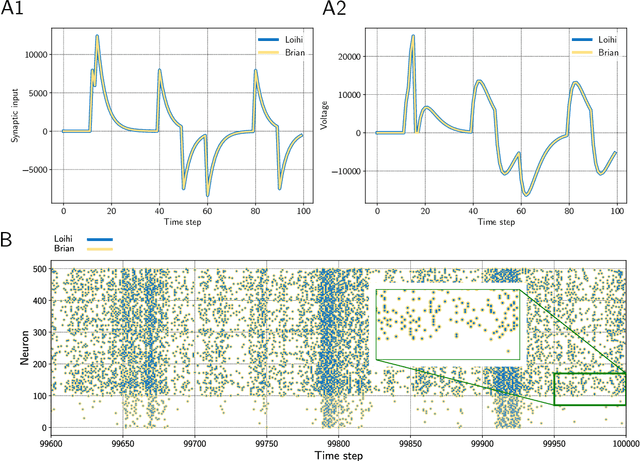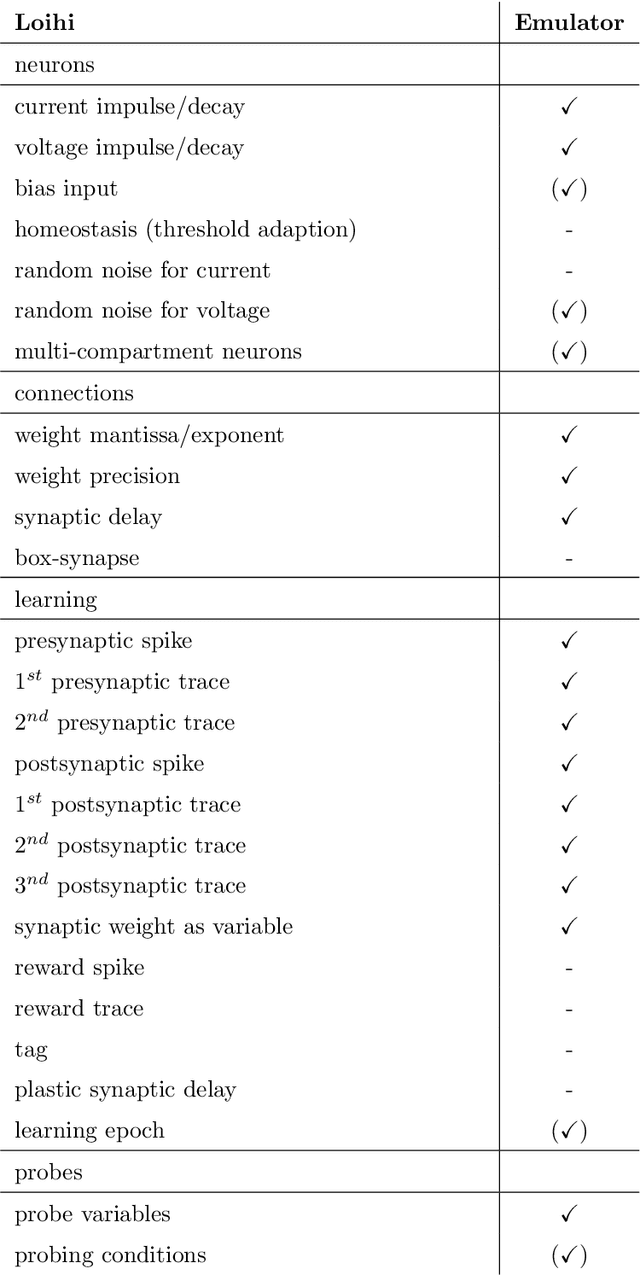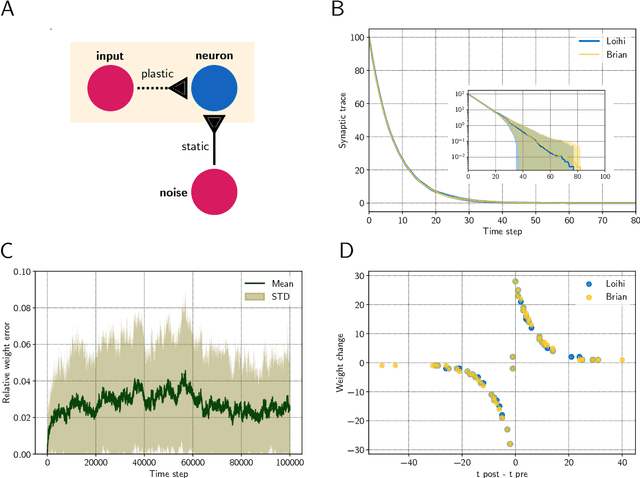Andrew B. Lehr
Adding numbers with spiking neural circuits on neuromorphic hardware
Mar 13, 2025Abstract:Progress in neuromorphic computing requires efficient implementation of standard computational problems, like adding numbers. Here we implement one sequential and two parallel binary adders in the Lava software framework, and deploy them to the neuromorphic chip Loihi 2. We describe the time complexity, neuron and synaptic resources, as well as constraints on the bit width of the numbers that can be added with the current implementations. Further, we measure the time required for the addition operation on-chip. Importantly, we encounter trade-offs in terms of time complexity and required chip resources for the three considered adders. While sequential adders have linear time complexity $\bf\mathcal{O}(n)$ and require a linearly increasing number of neurons and synapses with number of bits $n$, the parallel adders have constant time complexity $\bf\mathcal{O}(1)$ and also require a linearly increasing number of neurons, but nonlinearly increasing synaptic resources (scaling with $\bf n^2$ or $\bf n \sqrt{n}$). This trade-off between compute time and chip resources may inform decisions in application development, and the implementations we provide may serve as a building block for further progress towards efficient neuromorphic algorithms.
Brian2Loihi: An emulator for the neuromorphic chip Loihi using the spiking neural network simulator Brian
Sep 25, 2021



Abstract:Developing intelligent neuromorphic solutions remains a challenging endeavour. It requires a solid conceptual understanding of the hardware's fundamental building blocks. Beyond this, accessible and user-friendly prototyping is crucial to speed up the design pipeline. We developed an open source Loihi emulator based on the neural network simulator Brian that can easily be incorporated into existing simulation workflows. We demonstrate errorless Loihi emulation in software for a single neuron and for a recurrently connected spiking neural network. On-chip learning is also reviewed and implemented, with reasonable discrepancy due to stochastic rounding. This work provides a coherent presentation of Loihi's computational unit and introduces a new, easy-to-use Loihi prototyping package with the aim to help streamline conceptualisation and deployment of new algorithms.
Robust robotic control on the neuromorphic research chip Loihi
Aug 26, 2020



Abstract:Neuromorphic hardware has several promising advantages compared to von Neumann architectures and is highly interesting for robot control. However, despite the high speed and energy efficiency of neuromorphic computing, algorithms utilizing this hardware in control scenarios are still missing. One problem is the transition from fast spiking activity on the hardware, which acts on a timescale of a few milliseconds, to a control-relevant timescale on the order of hundreds of milliseconds. Another problem is to enable the execution of complex trajectories, requiring the spiking activity to contain sufficient variability, while at the same time, for reliable performance, network dynamics require adequate robustness against noise. In this study we exploit a recently developed biologically-inspired spiking neural network model, the so-called anisotropic network, as the basis for a neuromorphic algorithm for robotic control. For this, we identified and transferred the core principles of the anisotropic network to neuromorphic hardware using Intel's neuromorphic research chip Loihi and validated the system on trajectories from a motor-control task performed by a robot arm. We show that the anisotropic network on Loihi reliably encodes sequential patterns of neural activity, each representing a robotic action, and that the patterns allow the generation of multidimensional trajectories on control-relevant timescales. Taken together, our study presents a new algorithm that allows the control of complex robotic movements using state of the art neuromorphic hardware.
 Add to Chrome
Add to Chrome Add to Firefox
Add to Firefox Add to Edge
Add to Edge